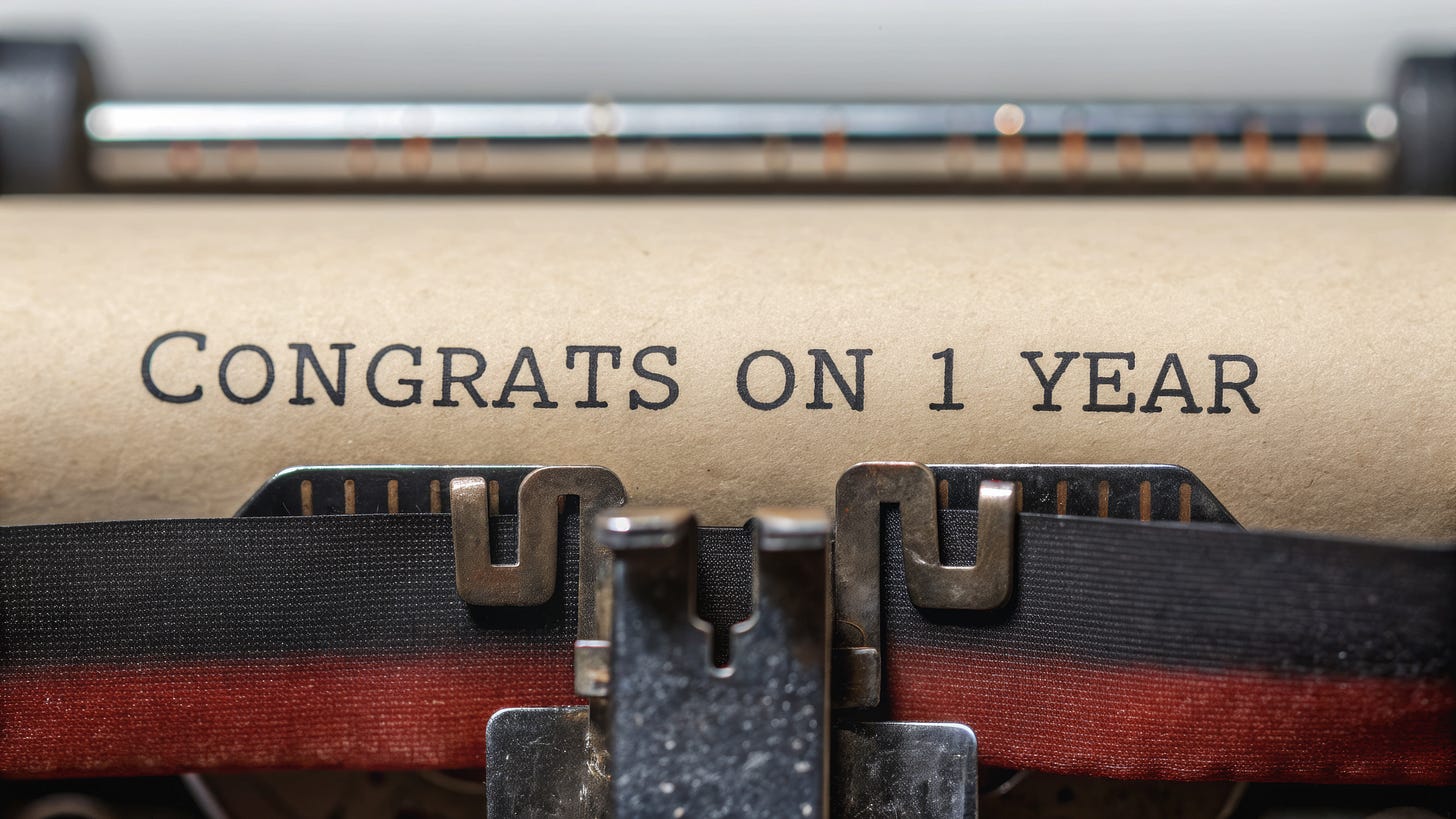DC Journal Club - September Round Up
And celebrating one year of sharing research!
HERE’S TO ONE YEAR! Thank you to everyone who reads, shares, comments, contributes, and messages. Please let me know if you have any feedback for the newsletter or topics you’d like me to explore. You can reply to the newsletter email or reach out on Substack or Instagram (@dcjournalclub).
As a parent, I’m constantly trying to synthesize empirical evidence, experiential wisdom, and theoretical frameworks to shape how I raise my children. It’s intellectually demanding work, but more than that, it can be profoundly isolating. Too often, online spaces reduce these complex realities to binary positions. Us versus them. Right versus wrong. Recipient parents versus donor-conceived adults. Bioessentialism versus social constructivism. There’s little room for the nuanced conversations our families desperately need. This is why I’m so grateful when people share openly about the real complexities and contradictions we navigate, the things no one tells you about when you begin this journey and that aren’t yet studied by researchers. While Eli Ramos’s identity as a queer, non-binary, multiracial, non-genetic, non-gestational recipient parent differs from mine, so much of their experience resonated. (I kept thinking, “Me too!”) For me, their writing fills a gap between research and reality, showing what it looks like to parent a donor-conceived child with intention, holding space for uncertainty while moving forward authentically.
Research Recap
Fusco et al. (2025) surveyed 624 Italians and found that while most had heard of assisted reproduction, knowledge of donor conception was extremely limited. Nearly half couldn’t distinguish donor from non-donor treatments and 96% were not aware of any direct contact with families formed through donor conception.
Li Piani et al. (2025) surveyed 390 Dutch-speaking women aged 21-30 in Belgium and found that altruism was the primary motivation for egg donation (87%), while financial compensation was not a significant factor. Women preferred directed (known) donation over anonymous donation (41% vs 19% willing to participate).
Lampic et al. (2025) surveyed 191 Swedish open-identity donors 14-17 years post-donation and found that 93% wanted notification when offspring request their identity. A majority had positive (71%) or neutral (19%) attitudes toward contact, though 59% wanted support regarding potential contact. Almost all donors maintained positive perspectives on identity release despite the long time elapsed, and about 60% were willing for donor-conceived offspring to meet their family members.
Adlam et al. (2025) surveyed 344 U.S. oocyte donors and found that while 81% disclosed their donation to partners, parents, and friends, only 51% told their own children. In another paper, Adlam et al. (2025) reported that while 91% of egg donors reported positive overall experiences, 94% were never contacted by clinics for medical updates despite 25% having important health changes to communicate.
Lassen et al. (2025) surveyed 39 U.S. egg donors and found that identity-release donors were more likely than non-identity-release donors to care about recipient parents’ interests (44% vs 8%), think about potential offspring (78% vs 42%), and be open to future contact.
Lakhote et al. (2025) studied 178 Indian oocyte donors following 2020 regulatory changes that eliminated financial compensation and found that donors experiencing positive emotions post-donation were more likely to report intrinsic motivation and see donation as personally meaningful, while those with negative emotions felt less motivated and more disconnected from their decision.
Anderson et al. (2025) surveyed 374 New Zealand parents of donor-conceived children and found that 86% had disclosed to their children at an average age of 6.6 years, with most (75%) feeling comfortable about the disclosure process, though 56% expressed concerns about potential long-term impacts, including loss of emotional connection, stigma, and their child’s wellbeing.
Other Tidbits
A commentary questions the categorical exclusion of neurodivergent gamete donors, arguing that the practice lacks both ethical and practical justification.
Trans artist Krishna Istha’s show “First Trimester” interviews potential sperm donors on stage, turning their genuine search for a donor into a performance that explores trans reproductive healthcare and prioritizes personal connection over clinical sperm bank data.
A man shares his personal story of becoming a single father to twin daughters at age 49. He later facilitated a connection between his teenage daughters and their egg donor.
Author Tsuriel Sdomi recounts meeting an elderly German man in 2014 who claimed to have donated sperm to Jewish women in Israel during the 1950s as “atonement” for his Nazi officer father’s crimes, an encounter that inspired his novel “The Case of the German Doctor” and raises questions about the unregulated early years of sperm donation in Israel.
This article examines private equity involvement in fertility clinics through the lens of a physician who experienced four consecutive PE acquisitions, arguing that while PE can bring capital and operational efficiency, short investment timelines (3-7 years) create structural pressures that prioritize profit over patient care, leading to aggressive marketing of unproven add-ons, misleading risk-sharing programs, and erosion of physician autonomy. Check out this 2024 US fertility practice ownership list.
Knowing is not enough; we must apply. Willing is not enough; we must do.
- Johann Wolfgang von Goethe

